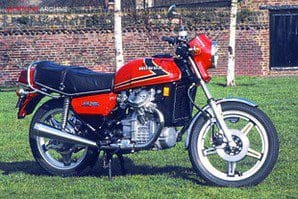
Say what you like about Honda, but it does things its own way and generally gets the end result pretty close to perfect. Occasionally it’s the first iterations of a bike that go a little awry, maybe when some senior middle manager allows newly qualified numpty engineers unfettered access to sound prototypes.
A perfect example would have to be the well-documented V-four cam issues that plagued the various VF motors. That instance aside, very few companies produce machinery so far out of left field that achieves both popular approval and global sales. This month’s mould breaker is probably one of the best illustrations of Honda’s mind-set.
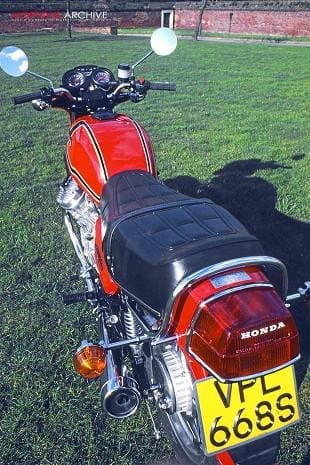 Anyone who went through a career in industry in the last quarter of the 20th century will know all about the buzz phrases; challenge perceived wisdom, confront holy cows, think outside the box, etc. Defying the conventional was the order of the day and Honda’s CX500 did that in virtually every aspect of its engine design. We motorcycle enthusiasts are supposed to be a conservative bunch, hugely resistant to change, yet, collectively, we bought into the CX concept by the busload. Even when a design fault plagued the early models we still kept faith with the Big Aitch.
Anyone who went through a career in industry in the last quarter of the 20th century will know all about the buzz phrases; challenge perceived wisdom, confront holy cows, think outside the box, etc. Defying the conventional was the order of the day and Honda’s CX500 did that in virtually every aspect of its engine design. We motorcycle enthusiasts are supposed to be a conservative bunch, hugely resistant to change, yet, collectively, we bought into the CX concept by the busload. Even when a design fault plagued the early models we still kept faith with the Big Aitch.
Enjoy more classic motorcycle reading, Click here to subscribe to one of our leading magazines.
Despite some of Honda’s earlier twins being little short of revolutionary, the bike-buying public quickly became at ease with concepts such as overhead cams running in alloy heads, 180º cranks and, inevitably, three-quarter litre fours with disc brakes and electric starters. The Sixties had redefined the motorcycle thanks largely to Honda taking the lead role with a giant highlighter pen to motorcycle engineering. Into the early Seventies and the very same company served up reheated offerings while concentrating on the car side of the business to widen its customer base. With this corporate plan latterly working well, there was resource to focus on bikes again and once under way the creative juices didn’t so much flow as gush.
Market research clearly indicated that there was a demand for a lively yet reliable middleweight capable of big distances with the minimum of owner input. Keeping a global eye on impending exhaust and noise emissions meant that water cooling was the obvious choice. With a water jacket the engine’s temperature could be more accurately maintained, allowing tighter bore machining tolerances and thus less wasting of fuel from blow-by etc. The fact that the same system also damped down engine noise was a fortuitous bonus. Already the engine was on a semi-rarefied plain; other than the GL1000 and GT750, bikes simply weren’t water cooled and certainly not middleweight bikes.
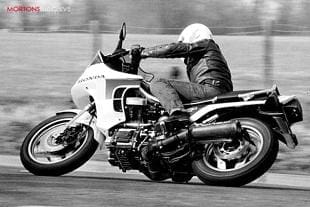 Given the company’s history you might have thought that a four-cylinder lump would have ticked the boxes, but in reality the design was perceived as passé for a brand new model. Something radical was called for, and after much blue sky research and several prototypes the transverse V-twin configuration was selected. For some motorcycle manufacturers this would have been more than sufficient in itself, but not these boys. Despite being second to market following Moto Guzzi’s well-established lead Honda knew it had a commercial marketing obligation to up the ante and refine the design.
Given the company’s history you might have thought that a four-cylinder lump would have ticked the boxes, but in reality the design was perceived as passé for a brand new model. Something radical was called for, and after much blue sky research and several prototypes the transverse V-twin configuration was selected. For some motorcycle manufacturers this would have been more than sufficient in itself, but not these boys. Despite being second to market following Moto Guzzi’s well-established lead Honda knew it had a commercial marketing obligation to up the ante and refine the design.
Although the transverse V-twin lends itself nicely to overhead cams (single or twin), the decision was taken to run with pushrods, which dictated what amounted to the signature design difference to almost all that had gone before at Honda. Guzzi owners were forced to accept compromised ergonomics, with the carbs and inlet pipework invading knee and upper shin space. With Honda’s unwritten but blatant mission to make the most vice-free motorcycle possible, there was no way the rider was going to have to sit splay-legged. So what would the solution be? Oh, simply rotate the pots 22º inwards about their centre lines and to the rear. This elegant manoeuvre put the carbs out of harm’s (or knee’s) way, and suddenly one of the biggest gripes about transverse V-twins was solved. It’s in the realms of barstool debates as to what came first, the adoption of pushrods or the twisted pots, but the bottom line is simply that one expedited the other.
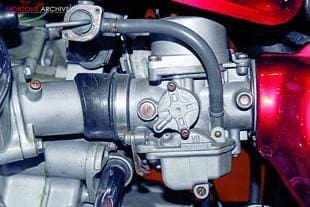 With all of this laid out on the drawing board the camshaft was located high in the crankcases to give short pushrods which would not flex significantly and thereby compromise valve timing. Being acutely aware of motorcycle history, Honda had obviously looked to established precedents, such as Velocette and Vincent with their short pushrods running on high-mounted camshafts. For 1978 a compression ratio of some 10:1 was fairly serious territory, but with TCI ignition providing the sparks, water-cooled heads and four valves per pot nothing was likely to go awry. In fact, given the fairly genuine 50 or so horses the motor churned out, you might have been questioning whether the OHC motors that had preceded the CX were actually genuinely necessary.
With all of this laid out on the drawing board the camshaft was located high in the crankcases to give short pushrods which would not flex significantly and thereby compromise valve timing. Being acutely aware of motorcycle history, Honda had obviously looked to established precedents, such as Velocette and Vincent with their short pushrods running on high-mounted camshafts. For 1978 a compression ratio of some 10:1 was fairly serious territory, but with TCI ignition providing the sparks, water-cooled heads and four valves per pot nothing was likely to go awry. In fact, given the fairly genuine 50 or so horses the motor churned out, you might have been questioning whether the OHC motors that had preceded the CX were actually genuinely necessary.
Other ground-breaking design saw the casting of the cylinders integrally with the upper crankcase. Such a move may have cost more initially in terms of foundry patterns and set-up costs, but the pros undoubtedly outweighed the cons. One less key gasket face, fewer studs or bolts and a substantially more rigid structure were only some of the benefits. The fact that this approach became custom and practice on the later V-fours can hardly be coincidental.
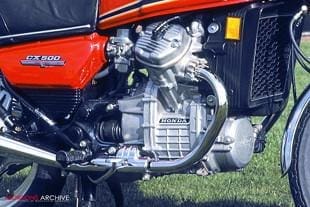 And before everyone had time to catch their collective breath at the dizzying array of technical engine innovations, there was more. The transmission was configured to rotate in the opposite direction to the crank, thereby reducing, almost to the point of negation, that sideways twitch as the crank was spun up. It may have been acceptable on longitudinally mounted cranks, à la Guzzi, Beemer et al, but it wasn’t going to happen with Honda. This only left the minute rocking couple associated with running a pair of con rods side by side; there was no way Honda was electing to run a knife and fork bottom end. If you feel that the small thrum from the side-by-side rods added just a little real world feel to the power plant, you should know that the prototypes’ test riders were actually critical of the engine. When it was originally built as a 90º V-twin unit, comments were passed that the overall experience was too bland. A revision to 80º between the pots swiftly invested the bike with sufficient character; whoever proclaimed Hondas clinical and sterile might want to reconsider that statement in the light of the CX500.
And before everyone had time to catch their collective breath at the dizzying array of technical engine innovations, there was more. The transmission was configured to rotate in the opposite direction to the crank, thereby reducing, almost to the point of negation, that sideways twitch as the crank was spun up. It may have been acceptable on longitudinally mounted cranks, à la Guzzi, Beemer et al, but it wasn’t going to happen with Honda. This only left the minute rocking couple associated with running a pair of con rods side by side; there was no way Honda was electing to run a knife and fork bottom end. If you feel that the small thrum from the side-by-side rods added just a little real world feel to the power plant, you should know that the prototypes’ test riders were actually critical of the engine. When it was originally built as a 90º V-twin unit, comments were passed that the overall experience was too bland. A revision to 80º between the pots swiftly invested the bike with sufficient character; whoever proclaimed Hondas clinical and sterile might want to reconsider that statement in the light of the CX500.
No doubt readers may very well remember the initially appalling reliability record the CX500 enjoyed, courtesy of some extremely serious camchain issues. The inverted toothed chain was simply far too heavy and over-specified for the manually adjusted tensioner. Some recent graduate engineer had obviously challenged perceived wisdom just a little too vigorously.
 Once the chain developed a bit of slack, it started to wear disproportionately, inevitably flailing around, getting worse and worse, and swiftly removing metal from the engine cases. The resultant swarf inexorably ended up in the big ends, leading to ill-informed allegations that the engine’s bottom end was flawed as well. The issues were eventually put right after several tensioner revisions during the model’s life, and no further issues were experienced.
Once the chain developed a bit of slack, it started to wear disproportionately, inevitably flailing around, getting worse and worse, and swiftly removing metal from the engine cases. The resultant swarf inexorably ended up in the big ends, leading to ill-informed allegations that the engine’s bottom end was flawed as well. The issues were eventually put right after several tensioner revisions during the model’s life, and no further issues were experienced.
It’s some 35 years on since the event and the passage of years has undoubtedly eroded some of the CX’s original mystique, but at the time even such apparently heinous failings did little to dent the bike’s reputation. Almost upon launch the CX500 had proved to be so popular, despite the bad PR, that even the owners affected were generally happy to wait for the necessary warranty work, such was Honda’s reputation at the time. That the subsequent models and camchain/adjusters revisions were finally just so well made speaks volumes of Honda’s commitment to the new design.
The rest of the bike, was, by comparison, much more traditional, yet it worked so why fix it? The shaft final drive was simply the final jewel in the crown for what was to be a class leader. Mileages of up to 200,000 have been documented, with only servicing and minimal component replacement issues. In fact one CX owners’ group owns a genuine Honda workshop tool board, and reports that less than 50% of the board’s contents have ever been used. Another key example of the bike’s longevity is the tale of a specialist dealer who hoovered up the fairly immense haul of aftermarket CX pistons within the UK. At the last count he’d sold just four sets to people who had bought total wrecks.
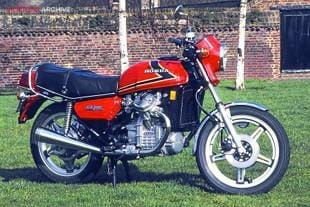 There’s an incontestable rightness of purpose to the bike. Its fundamental design was absolutely spot-on and the subsequent iterations only proved just how soundly engineered the original bikes were. Although manifestly less than an ideal candidate for forced induction, Honda elected to add a turbo unit to its CX500. Simply put, the very fact that the engine, although obviously reworked, took the upgrade speaks volumes about the basic design. And speaking of volumes, the original CX500 latterly grew by some 30% to become the CX650, which went on to be another rather useful piece of kit.
There’s an incontestable rightness of purpose to the bike. Its fundamental design was absolutely spot-on and the subsequent iterations only proved just how soundly engineered the original bikes were. Although manifestly less than an ideal candidate for forced induction, Honda elected to add a turbo unit to its CX500. Simply put, the very fact that the engine, although obviously reworked, took the upgrade speaks volumes about the basic design. And speaking of volumes, the original CX500 latterly grew by some 30% to become the CX650, which went on to be another rather useful piece of kit.
The CX500 didn’t so much break with tradition as rewrite how we perceived motorcycles. It was in the vanguard of a whole genre and piloted so many features that are now part and parcel of the modern motorcycle. For these reasons and scores more, the Honda CX500 is unquestionably a mould breaker of the highest order.


